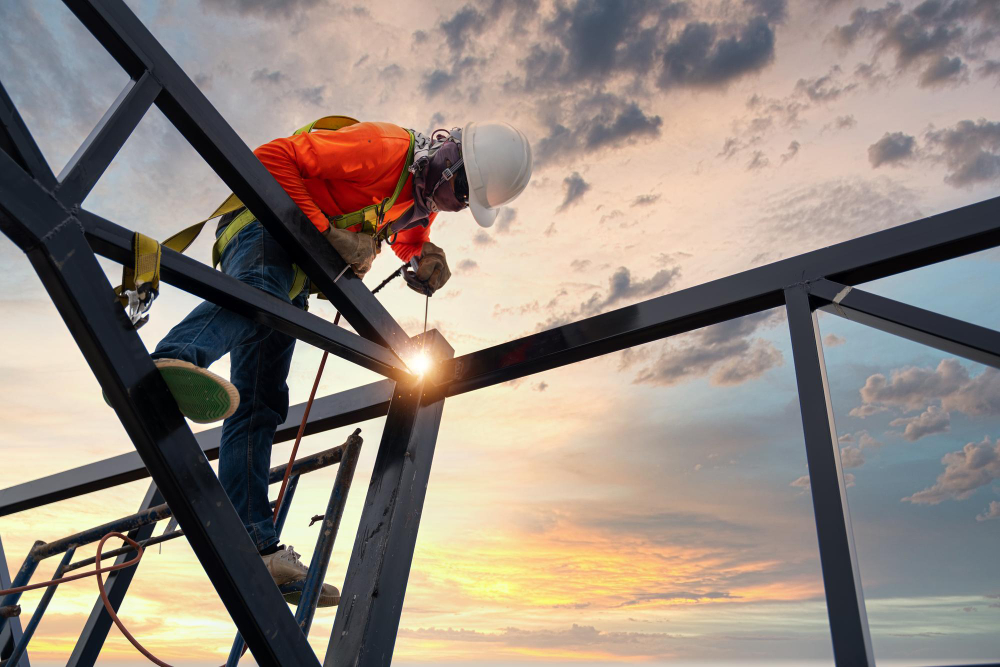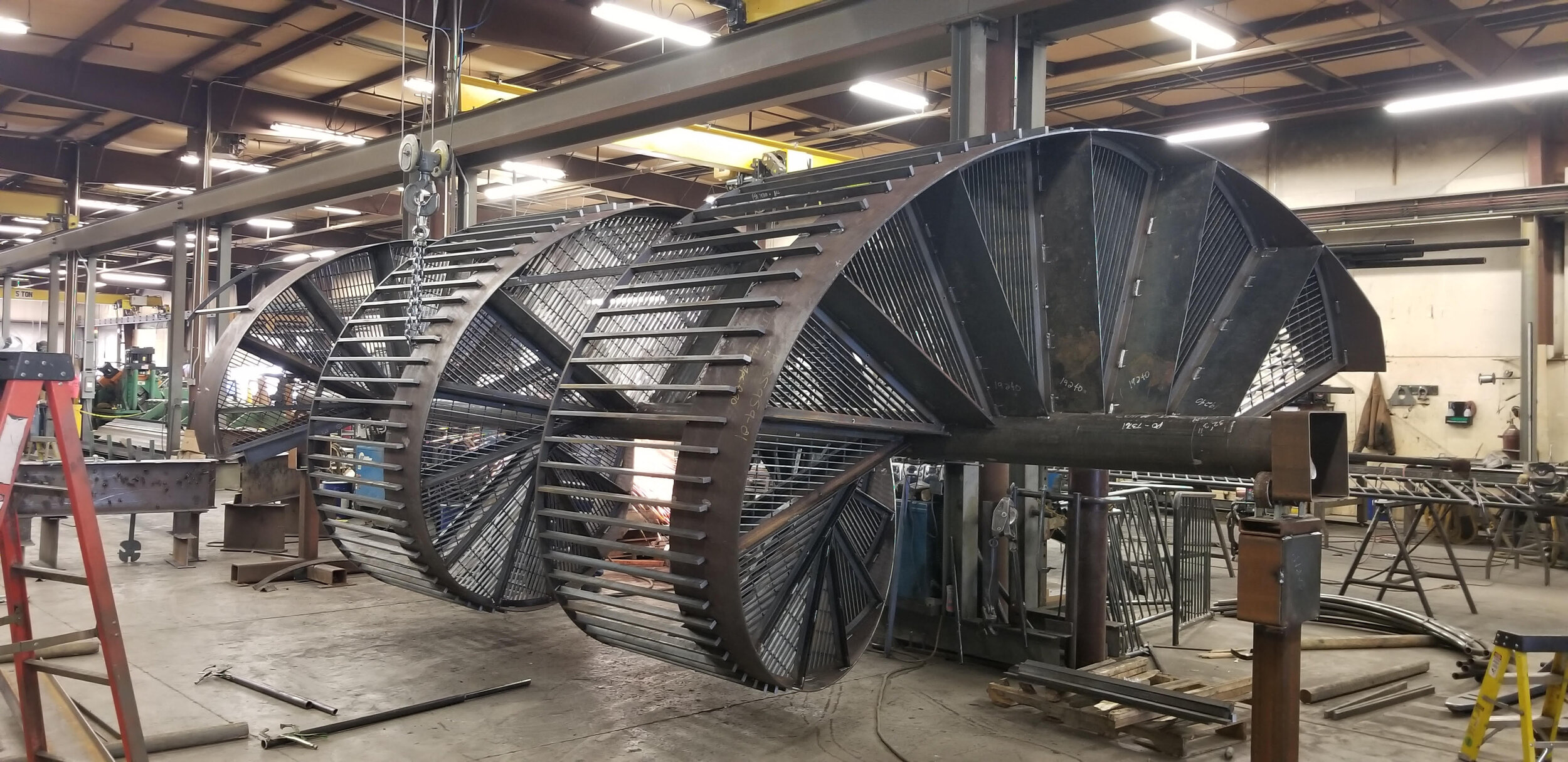The Ultimate Handbook on Custom-made Steel Fabrication Solutions for Structural Projects
In the realm of structural jobs, the value of personalized steel fabrication services can not be overstated. From the foundational understanding of steel construction fundamentals to the detailed procedure of picking the most ideal products, every action in this trip plays a crucial role in the ultimate success of a project.
Understanding Custom Steel Fabrication Basics
Looking into the fundamentals of custom steel fabrication provides understanding right into the intricate procedure of transforming raw steel into tailored structural elements. Custom steel fabrication is a specific manufacturing method that includes cutting, shaping, and setting up steel materials to create unique structures according to details task demands. Comprehending the basics of custom steel manufacture is critical for making certain the effective execution of structural tasks.
The process generally begins with the analysis of job specifications and layout demands. This preliminary stage includes comprehensive preparation and cooperation between fabricators, developers, and engineers to establish the most ideal technique for fabricating the steel components. Accuracy is essential throughout the fabrication procedure, as even small deviations can influence the structural stability of the final product.
Numerous methods, such as reducing, welding, and shaping, are employed to transform raw steel right into the desired architectural elements. Proficient fabricators use innovative machinery and tools to make certain accuracy and consistency throughout the manufacture process. Quality control actions are implemented to confirm the honesty of the fabricated elements prior to they are assembled on-site, guaranteeing conformity with sector standards and job specs.
Picking the Right Steel Materials

Primarily, the sort of structural project and its details needs play a critical duty in figuring out the most suitable steel products. Variables such as the load-bearing capability, environmental conditions, and wanted life-span of the structure will determine the quality and type of steel that should be made use of.
Additionally, the physical residential properties of the steel, including weldability, ductility, and stamina, must straighten with the job's needs to assure ideal efficiency and toughness (steel fixing). Additionally, factors to consider such as rust resistance, cost-effectiveness, and availability of the steel products should likewise be considered during the option procedure
Style Considerations for Structural Tasks
Architectural jobs demand careful attention to create considerations to make sure both functionality and security are focused on throughout the building procedure. When it concerns making structural jobs, numerous essential aspects must be taken into consideration to assure the success of the endeavor. First of all, the architectural integrity of the building need to be a leading concern. This involves evaluating tons, stress and anxieties, and environmental aspects to figure out one of the most ideal layout that can withstand different conditions gradually. In addition, factors to consider for the capability of the framework play an essential function in the style process. Comprehending the function of the building and exactly how it will be used assists in producing a style that makes best use of efficiency and usability. Moreover, incorporating elements that boost the aesthetics of the structure can further boost the total layout. Balancing looks, security, and page functionality is crucial in producing successful architectural projects that fulfill both aesthetic and useful needs. By very carefully considering these facets during the layout phase, engineers and engineers can make certain the structural task's success from conception to conclusion.
Enhancing Construction Processes for Performance

Moreover, carrying out lean manufacturing principles can dramatically improve effectiveness in steel fabrication. By lessening waste, enhancing operations, and improving communication in between various teams associated with the fabrication procedure, jobs can be completed extra quickly and with greater quality requirements.
In addition, establishing a well-organized production timetable and operations can help in prioritizing tasks, designating sources effectively, and meeting job due dates without delay. By having a clear strategy in place and on a regular basis checking progress, any prospective bottlenecks or delays can be determined and attended to without delay, ensuring efficient and smooth construction processes for structural projects.
Quality Assurance and Job Administration in Steel Construction
To guarantee the successful execution of steel fabrication projects, thorough high quality control steps and effective task monitoring methods are necessary parts in preserving precision and meeting client assumptions. Quality assurance in steel manufacture includes extensive evaluations at various phases of the manufacture procedure to verify compliance with task requirements and market standards. This consists of product testing, dimensional checks, and weld inspections to ensure architectural stability and safety.
Task monitoring plays a vital role in coordinating the numerous elements of steel fabrication tasks, such as scheduling, source allowance, and communication amongst team members. A distinct project strategy with my company clear goals, landmarks, and timelines assists to keep track of progression and deal with any prospective issues proactively. Reliable communication in between all stakeholders, including customers, designers, professionals, and makers, is important for making certain that the project advances efficiently and meets the preferred top quality requirements.
Verdict
In conclusion, customized steel manufacture plays an essential function in architectural tasks by offering tailored remedies using the best materials and layout factors to consider. Efficiency in fabrication processes, quality assurance, and reliable project management are vital for effective end results. By recognizing the basics of customized steel construction and carrying out structured procedures, task groups can supply high-quality and resilient frameworks that satisfy the certain demands of their customers.
Personalized steel manufacture is a customized production strategy that entails cutting, shaping, and constructing steel products to produce special frameworks according to particular job requirements.To guarantee the successful implementation of steel manufacture tasks, careful high quality control steps and efficient project management techniques are crucial elements in preserving precision and conference client assumptions. Quality control in steel construction involves strenuous examinations at different stages of the fabrication procedure to confirm compliance with task specs and market standards (Alpha reo).Task administration plays an essential role in collaborating the various facets of steel fabrication tasks, such as scheduling, source allowance, and communication amongst team participants.In final thought, custom steel manufacture plays an important duty in structural tasks by supplying customized options using the ideal materials and style considerations